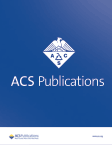Machine learning-based plasma metabolomic profiles for predicting long-term complications of cirrhosis.
IF 2.9
Q2 PUBLIC, ENVIRONMENTAL & OCCUPATIONAL HEALTH
引用次数: 0
Abstract
BACKGROUND AND AIMS The liver cirrhosis complications occur after long asymptomatic stages of progressive fibrosis and are generally diagnosed late. We aimed to develop a plasma metabolomic-based score tool to predict these events. APPROACH AND RESULTS We enrolled 64,005 UK biobank participants with metabolomic profile. Participants were randomly divided into the training (n=43,734) and validation cohorts (n=20,271). Liver cirrhosis complications were defined as hospitalization for liver cirrhosis or presentation with hepatocellular carcinoma. Interpretable machine learning framework was applied to learn the metabolomic states extracted from 168 circulating metabolites in the training cohort. An integrated nomogram was developed and compared to conventional and genetic risk scores. We created three groups: low-risk, middle-risk, and high-risk through selected cut-offs of the nomogram. The predictive performance was validated through area under time-dependent receiver operating characteristic curve (time-dependent AUC), calibration curves, and decision curve analysis. The metabolomic state model could accurately predict 10-year risk of liver cirrhosis complications in the training cohort (time-dependent AUC 0.84 [95% CI 0.82-0.86]), and outperform the fibrosis-4 index (time-dependent AUC difference 0.06 [0.03-0.10]) and polygenic risk score (0.25 [0.21-0.29]). The nomogram, integrating metabolomic state, aspartate aminotransferase, platelet count, waist/hip ratio, and smoking status, showed a time-dependent AUC of 0.930 at 3 years, 0.889 at 5 years, and 0.861 at 10 years in the validation cohort, respectively. The hazard ratio in the high-risk group was 43.58 (95% CI 27.08-70.12) compared with the low-risk group. CONCLUSIONS We developed a metabolomic state-integrated nomogram, which enables risk stratification and personalized administration of liver-related events.基于机器学习的血浆代谢组学图谱用于预测肝硬化的长期并发症。
背景和目的肝硬化并发症发生在长期无症状的渐进性纤维化阶段之后,通常诊断较晚。我们旨在开发一种基于血浆代谢组学的评分工具来预测这些事件。参与者被随机分为训练组(43734 人)和验证组(20271 人)。肝硬化并发症被定义为肝硬化住院或出现肝细胞癌。应用可解释的机器学习框架来学习从训练队列中的 168 种循环代谢物中提取的代谢组学状态。我们开发了一个综合提名图,并将其与传统和遗传风险评分进行了比较。我们通过选择提名图的临界值创建了三个组别:低风险、中风险和高风险。通过时间依赖性接收者操作特征曲线下面积(时间依赖性AUC)、校准曲线和决策曲线分析验证了预测性能。代谢组学模型能准确预测训练队列中肝硬化并发症的10年风险(时间依赖性AUC为0.84 [95% CI 0.82-0.86]),优于纤维化-4指数(时间依赖性AUC差异为0.06 [0.03-0.10])和多基因风险评分(0.25 [0.21-0.29])。在验证队列中,整合了代谢组学状态、天冬氨酸氨基转移酶、血小板计数、腰围/臀围比和吸烟状况的提名图显示,与时间相关的AUC分别为3年0.930、5年0.889和10年0.861。与低风险组相比,高风险组的危险比为 43.58 (95% CI 27.08-70.12)。结论 我们开发了一种代谢组学状态整合提名图,可以对肝脏相关事件进行风险分层和个性化管理。
本文章由计算机程序翻译,如有差异,请以英文原文为准。
求助全文
约1分钟内获得全文
求助全文
来源期刊

ACS Chemical Health & Safety
PUBLIC, ENVIRONMENTAL & OCCUPATIONAL HEALTH-
CiteScore
3.10
自引率
20.00%
发文量
63
期刊介绍:
The Journal of Chemical Health and Safety focuses on news, information, and ideas relating to issues and advances in chemical health and safety. The Journal of Chemical Health and Safety covers up-to-the minute, in-depth views of safety issues ranging from OSHA and EPA regulations to the safe handling of hazardous waste, from the latest innovations in effective chemical hygiene practices to the courts'' most recent rulings on safety-related lawsuits. The Journal of Chemical Health and Safety presents real-world information that health, safety and environmental professionals and others responsible for the safety of their workplaces can put to use right away, identifying potential and developing safety concerns before they do real harm.
 求助内容:
求助内容: 应助结果提醒方式:
应助结果提醒方式:


